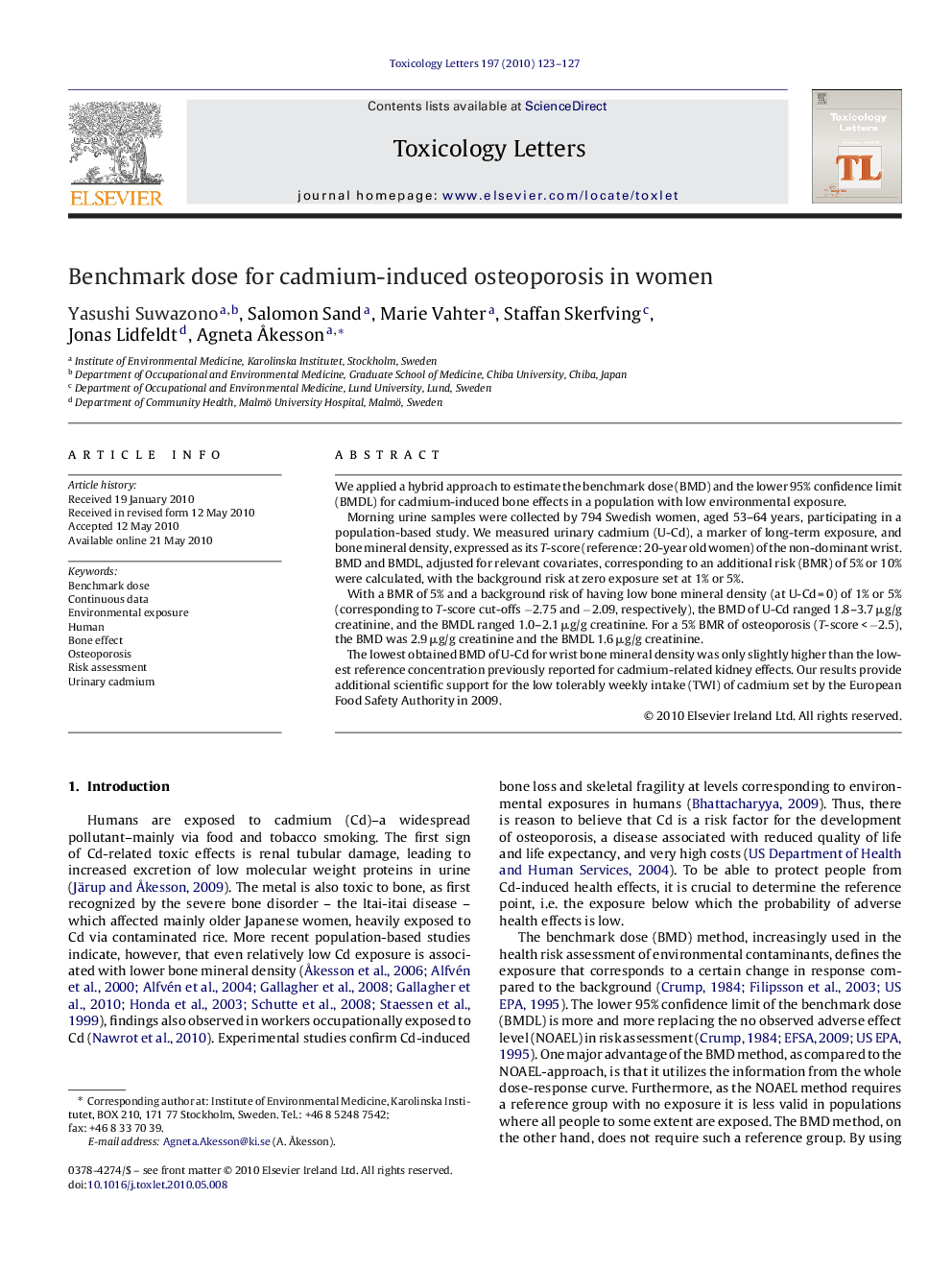| کد مقاله | کد نشریه | سال انتشار | مقاله انگلیسی | نسخه تمام متن |
|---|---|---|---|---|
| 2600536 | 1133270 | 2010 | 5 صفحه PDF | دانلود رایگان |

We applied a hybrid approach to estimate the benchmark dose (BMD) and the lower 95% confidence limit (BMDL) for cadmium-induced bone effects in a population with low environmental exposure.Morning urine samples were collected by 794 Swedish women, aged 53–64 years, participating in a population-based study. We measured urinary cadmium (U-Cd), a marker of long-term exposure, and bone mineral density, expressed as its T-score (reference: 20-year old women) of the non-dominant wrist. BMD and BMDL, adjusted for relevant covariates, corresponding to an additional risk (BMR) of 5% or 10% were calculated, with the background risk at zero exposure set at 1% or 5%.With a BMR of 5% and a background risk of having low bone mineral density (at U-Cd = 0) of 1% or 5% (corresponding to T-score cut-offs −2.75 and −2.09, respectively), the BMD of U-Cd ranged 1.8–3.7 μg/g creatinine, and the BMDL ranged 1.0–2.1 μg/g creatinine. For a 5% BMR of osteoporosis (T-score < −2.5), the BMD was 2.9 μg/g creatinine and the BMDL 1.6 μg/g creatinine.The lowest obtained BMD of U-Cd for wrist bone mineral density was only slightly higher than the lowest reference concentration previously reported for cadmium-related kidney effects. Our results provide additional scientific support for the low tolerably weekly intake (TWI) of cadmium set by the European Food Safety Authority in 2009.
Journal: Toxicology Letters - Volume 197, Issue 2, 16 August 2010, Pages 123–127